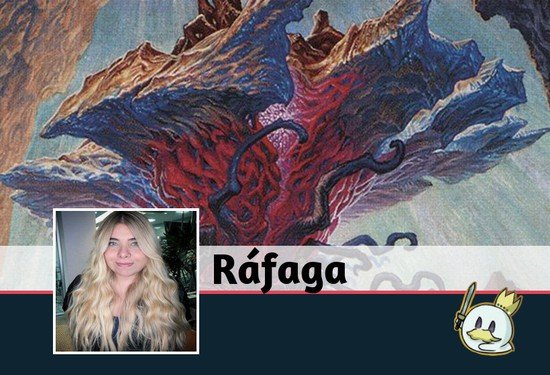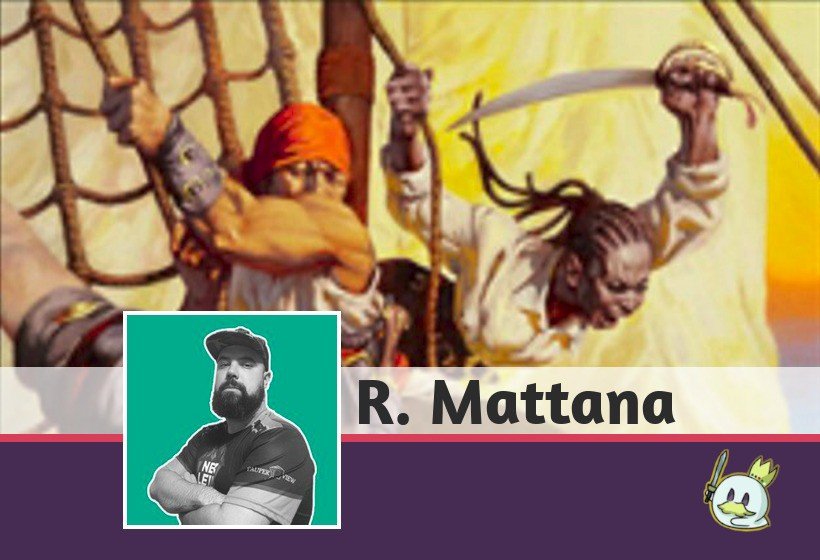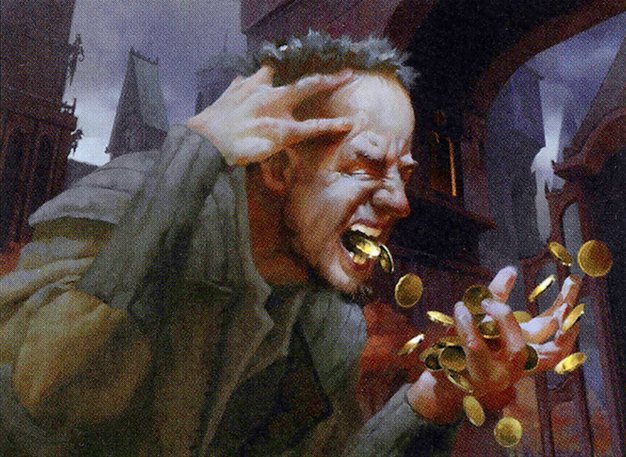Emrakul is the Titan of Corruption, the largest and most fearsome of the Eldrazi. It does not affect inorganic matter, such as rocks, minerals and water, but it is capable of distorting all living things as plants, animals or other sentient beings. This card causes silent terror wherever it flies, transmitting desolation, emotional and physical distance, and the shiver caused by the emptiness and the terror of being alone.
This is the sensation that it causes when it enters the battlefield,
especially in first turn.
If in Emrakul’s lore it is described in this way, its representation in the game could not be different.
The card in question, Emrakul, the Aeons Torn, was printed for the first time in 2010 in the Rise of the Eldrazi, third block of Zendikar. Along with Griselbrand, it is the main condition of victory of the deck that this article describes: Show and Tell or Sneak and Show of the Legacy format.
We will initially adopt the following configuration as the basis for Show and Tell:
The strategy is simple. As a combo deck, we need to put powerful creatures, such as Emrakul, the Aeons Torn and Griselbrand, into play as quickly as possible.

Putting one of these creatures into play will possibly mean the end of the game for the opponent. For starters, Emrakul, the Aeons Torn cannot be countered: it has an extra turn if it is cast, it offers protection against colored spells, it flies, it has Annihilator 6 and, when it hits the graveyard, the player can shuffle the deck with the cemetery. Besides that, it is a 15/15 body. Awesome! Of course, not for opponents.
As for Griselbrand, it impacts the game in several ways. First, because it allows you to buy 7 to 14 cards, allowing you to find that Force of Will you need to protect your battlefield or helping you to find a faster way to put Emrakul into play. Besides that, Griselbrand is a flying 7/7 with a lifelink —an incredible defensive body.
So, putting it on the battlefield can prevent any attack from your opponent. Despite not generating the same kind of advantage as Griselbrand, Emrakul is still quite difficult to answer and tends to kill the opponent at once. (Their nightmare is Karakas or, as they say, a bunch of flying squirrels.)
We have talked about the big guys... So how can we bring them to the battlefield in first turn?
First, let's talk about the cards that name the deck.

These are the two cards that will put the creatures into play. Each of them plays an important role. Show and Tell mana cost is lower, which means it requires less resources to solve. It allows a certain symmetry, that is, your opponent can bring something to the battlefield as well. The advantage is that there are not many decks with cards more impressive than Sneak and Show’s. You will need one more turn to win after casting Show and Tell, but the creatures you bring are extremely difficult to answer, so you will always have this advantage.
On the other hand, Sneak Attack needs an extra mana to be casted, plus one one to activate the ability and another to bring the a creature to the field. However, if you have the time and resources to activate the card's ability, Sneak Attack will end the game quickly. Bringing Emrakul to the battlefield will effectively clean the table.
Another way to fight even faster is to use Show and Tell combined with Omniscience.

Many Sneak and Show lists play with Omniscience on the main deck, as there’s a great chance of winning quickly. However, several decks from the current meta deal well with Griselbrand and Emrakul. Thus, it might be a good idea to simplify the plan and relegate Omniscience to the sideboard. Especially if it is a version that uses Cunning Wish.
Omniscience is very strong against bad matches and an excellent response for decks using Containment Priest and mirrors.
Now, you may ask: “hey, Rafaguinha, what about the mana base?”.

As we have seen, both Show and Tell and Sneak Attack need multiple generic manas to be cast. These lands allow the deck to accelerate its objective in the first turn. They also help the deck to draw cards like Daze.
Each of these lands has an adversity, so we do not use their complete sets. The 2 damage points caused by Ancient Tomb every time you use it can give you a certain disadvantage against aggressive decks. City of Traitors costs no life, but it doesn't last the entire game, which makes it a rather expensive land to play in early turns.

This artifact allows you to accelerate the mana base even more, allowing you to resolve your spells ahead of schedule. When combined with Ancient Tomb or City of Traitors, Lotus Petal causes this deck to cast Show and Tell in first turn. The perfect hand would come with Show and Tell, Emrakul, the Aeons Torn, Lotus Petal and one of the lands that generate two mana.
In addition to these lands, we also have Boseiju:

I really like to use this card from the main deck. Even if it causes two damage points, it protects the combo quite efficiently in the absence of a spell.
And then we have the fetchlands:

We use fetchlands to have better accuracy on the deck. At the cost of one life point, we have a tidy mana base, mainly in a two/three-color deck. After all, 5% of your initial life is a bargain to have access to all the colors of the deck.
Here’s a tip, and not just for this deck: learn to wait for the right moment to pop your fetchland. While it is at the battlefield, it generates a strategic advantage, even if it is sometimes not that obvious. With the fetch on the battlefield, your opponent does not know what land you will be searching for, so they won’t know you have in your hand. Besides, the ideal is that we pop the fetch when we want to use it, so as not to take a Wasteland for nothing.
As for the old dual:

There’s not much to talk about, right? Dual lands take over the Legacy scenario on decks with two or more colors. It just doesn't escape Wasteland.
It’s great to have a combo, despite the controversies. So, what would be the resources to find the combo quickly, since the hand is not always perfect?

As this is a combo deck (A + B), executing the maximum number of cantrips reinforces and greatly increases the consistency of the deck. It is not a mystery: if we need to find the combo, we need cantrips.
And if the combo seems fragile... How to protect it?

As Sneak and Show tries to solve some spells that can finish the game in a few moves, counterspells are the guarantee that your combo will be solved.
Force of Will was always a Legacy staple and this deck could not be different.
On the other hand, Daze was not always included. In the past, cards like Spell Pierce and Flusterstorm occupied this space, depending on the meta of the time.
And even though the format is currently a bit hostile for combo decks, having consistent defense is a great way to end the game before your opponents can hurt your strategy.
Therefore, it has already become clear how to win with Sneak and Show.
But, what to expect against certain decks?
Against combos (Storm, Elves, Belcher, Oops all spells): whoever has a combo first wins the match! Show and Tell has cards like Force of Will, Daze, Spell Pierce and can handle more fragile combos. (Famous glass cannons, such as Belcher and Oops all spells). On the post-side we need to side in Flusterstorm.
In games against Reanimator, we need extra attention. The idea is to fight with Emrakul. After all, if we have a Griselbrand, the Reanimator has another. On the post-side we side in Grafdigger’s Cage and Surgical Extraction.
Against Aggros (Goblins, Merfolks, Burn, UR delver, etc), we need to try to fight as quickly as possible, since it is unlikely that the opponent will have resources to deal with the powerful creatures of the Sneak and Show. We can side in Kozilek's Return.
Blood moon works well against decks with three colors.
Against Tempo or Control decks (Temur, Death and Taxes) the ideal is always to have a counter at your disposal, as surely the decks with blue will try to counter your move and in that case we side in Red Elemental Blast.
Against Death and Taxes we can use Pyroclasm.
In mirror matches, we side in Arcane Artisan.
Remember: the sideboard will always depend on the meta, so we can have many variables. The options I described here are just to give you an idea of how to manipulate the deck.
It is also good to remember that, after Oko, Thief of Crowns’s ban, Emrakul, the Aeons Torn is once again a major threat to the format's decks. It is not for nothing that Show and Tell is a massive presence in current meta, as noted here.
That's it for now! If you enjoyed this brief analysis, I will try to bring you more complex information next time, such as deck variations and other side possibilities.
Thank you and good game!
*Quote taken from Lore: here














— commentaires 0
, Réactions 1
Soyez le premier à commenter